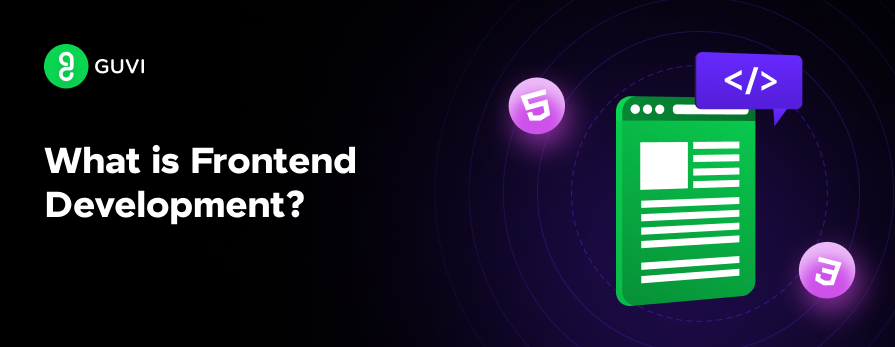
What is Frontend Development? Roles, Responsibilities, Skills & Salary
Jul 03, 2025 4 Min Read 9352 Views
(Last Updated)
Frontend development is a crucial part of web application creation, focusing on building user-facing aspects that are visible and interactive. Wondering about the stuff you need to know to get started in this field?
In this article, I will be listing and discussing the core components of frontend development, covering essential technologies like HTML, CSS, and JavaScript, as well as the roles, responsibilities, and skills required to succeed in this field.
By exploring specialized roles within frontend development and providing a detailed analysis of modern tools and salary trends, this article serves as a comprehensive guide for anyone looking to understand or pursue a career in frontend development.
Table of contents
- Introduction to Frontend Development
- Key Technologies:
- Responsibilities of a Frontend Developer
- Detailed Responsibilities:
- Specialized Frontend Roles
- Core Frontend Skills
- Tools & Technologies in Frontend Development
- Salary Overview (India)
- Factors Influencing Salary:
- Conclusion
- FAQs
- What are the skills required for front end developer?
- What is the front-end developer role?
- Is HTML front-end or backend?
- Does front end use Python?
- Is SQL front-end or backend?
Introduction to Frontend Development
Frontend development is a pivotal part of web development, focused on creating the client-facing side of applications, ensuring that users interact seamlessly with the web interface. It involves the use of key technologies like HTML, CSS, and JavaScript, each of which plays a crucial role in building responsive, accessible, and dynamic user interfaces.
Key Technologies:

- HTML5: Provides the semantic structure of the webpage. HTML5 introduced new elements such as <article>, <section>, <footer>, and more, allowing for a well-organized DOM tree and improving the website’s SEO and accessibility. Features like the <canvas> element allow for dynamic, scriptable rendering of 2D shapes and images.
- CSS3: Handles the layout, colors, fonts, and responsiveness of web pages. Modern layout mechanisms like CSS Grid and Flexbox provide powerful tools for creating complex layouts with minimal code. CSS3 also introduced animations and transitions, enabling developers to create interactive elements without relying on JavaScript.
- JavaScript (ES6+): JavaScript adds the logic and interactivity needed for dynamic websites. ES6 (ECMAScript 2015) brought essential features like Arrow Functions, Destructuring, and Template Literals, which simplify code and improve readability. Advanced concepts like Closures, Promises, and Async/Await make it easier to manage asynchronous operations, crucial for fetching data from APIs and creating SPAs (Single Page Applications).
Responsibilities of a Frontend Developer
Frontend developers are responsible for implementing the user interface (UI) design into functional code, ensuring that the visual elements not only look great but also work efficiently across various devices and browsers.

Detailed Responsibilities:
| Responsibility | Overview |
| UI/UX Implementation | Converts design prototypes (e.g., from Figma, Sketch) into pixel-perfect HTML/CSS. Ensures the design is responsive using CSS media queries, Grid, and Flexbox. |
| JavaScript for Interactivity | Leverages JavaScript frameworks like React.js, Vue.js, or Angular to build reusable components, manage UI states, and handle DOM manipulation. |
| Responsive Web Design | Develops websites that work across different screen sizes, from mobile phones to large desktops, by using a mobile-first approach and CSS methodologies. |
| Web Performance Optimization | Implements techniques like Lazy Loading, Debouncing JavaScript events, and reducing the size of image assets with WebP formats. Uses Gzip and Brotli compression for faster loading. |
| Cross-Browser Compatibility | Ensures websites work seamlessly on all browsers, using tools like Autoprefixer to handle browser-specific CSS rules and Polyfills for JavaScript compatibility. |
Specialized Frontend Roles
With advancements in frontend technologies, various specialized roles have emerged. Frontend development is no longer limited to basic web page creation; it involves developing complex, interactive web applications.

| Role | Description |
| UI/UX Developer | Focuses on implementing designs with a strong emphasis on user experience (UX) and accessibility, ensuring responsive and fluid interfaces.Average Salary: ₹6 LPA to ₹12 LPA |
| Frontend Engineer | Works on more complex functionalities, optimizing performance, managing application state (using Redux or Vuex), and designing scalable frontend architectures.Average Salary: ₹7 LPA to ₹15 LPA |
| Mobile Frontend Developer | Builds mobile-first or responsive web applications, often using React Native for cross-platform mobile app development.Average Salary: ₹8 LPA to ₹16 LPA |
| Frontend Architect | Designs the overall frontend architecture, ensuring scalability, reusability of components, and integration with backend services.Average Salary: ₹12 LPA to ₹25 LPA |
| Accessibility Specialist | Ensures the web applications are accessible to all users, including those using assistive technologies, adhering to WCAG 2.1 guidelines.Average Salary: ₹6 LPA to ₹13 LPA |
Core Frontend Skills
The role of a frontend developer requires a deep understanding of the following skills and technologies:

| Skill | Description |
| HTML5 & Semantic Markup | Writing clean, semantic HTML code improves SEO, accessibility, and maintainability. Tags like <main>, <article>, and <aside> provide context to the structure of the page. |
| CSS3 & Preprocessors (SASS/LESS) | Expertise in creating responsive, fluid layouts using CSS Grid and Flexbox. Preprocessors like SASS allow for variables, nesting, and mixins, making CSS more maintainable. |
| JavaScript (ES6+) | Mastery of modern JavaScript, including ES6 Modules, Async/Await, Promises, and Classes. Familiarity with JavaScript build tools like Webpack for bundling. |
| JavaScript Frameworks | React.js, Vue.js, and Angular enable developers to build SPAs (Single Page Applications) with component-based architecture, making applications modular and maintainable. |
| State Management | Handling complex application states using tools like Redux (in React), Vuex (in Vue.js), or NgRx (in Angular). Helps manage global and local states efficiently in large-scale apps. |
| Version Control (Git) | Collaboration and source control through Git, using platforms like GitHub or GitLab for versioning, branching, and code review. Following workflows like GitFlow ensures smooth integration and deployment. |
Learning all this from scratch doesn’t seem that simple, does it? Need proper guided help?
Then take a rightly paced approach with updated syllabi, tools, artificial intelligence, and industry-grade projects with GUVI’s Full Stack Development Course brought to you by expert full stack developers, where you learn both frontend and backend development!
Tools & Technologies in Frontend Development
Frontend developers utilize a broad array of tools and frameworks to enhance productivity, optimize performance, and maintain code quality.

| Category | Examples |
| Version Control | Git, GitHub, GitLab for code versioning, branching, merging, and collaborative workflows. |
| Build Tools | Webpack, Parcel, Vite for bundling assets (CSS, JavaScript) and optimizing application load times. |
| Preprocessors | SASS, LESS to add variables, mixins, and modularize CSS for maintainability and scalability. |
| Task Runners | Gulp, Grunt for automating repetitive tasks like image compression, CSS minification, and file watching. |
| JavaScript Frameworks | React.js, Vue.js, Angular for building dynamic, scalable applications with reusable UI components. |
| Testing & Debugging | Jest, Mocha, Cypress for unit and integration testing; Chrome DevTools for debugging and performance profiling. |
| API Interaction | Axios, Fetch API, GraphQL for interacting with backend services and handling data asynchronously. |
Salary Overview (India)
Frontend development is a lucrative career in India, especially as companies continue to focus on digital transformation and building highly interactive web applications.
| Experience Level | Average Salary (INR per Annum) |
| Entry-Level (0-2 years) | ₹3.5 – ₹6 LPA |
| Mid-Level (3-5 years) | ₹6 – ₹12 LPA |
| Senior-Level (6+ years) | ₹12 – ₹20+ LPA |
Factors Influencing Salary:
- Location: Salaries are generally higher in metro cities like Bangalore, Mumbai, and Delhi due to higher demand and living costs.
- Company Size: Larger companies or MNCs tend to offer higher salaries compared to startups or smaller firms.
- Skill Set: Developers proficient in modern frameworks like React, Vue.js, and Angular are highly sought after and command premium salaries.
Conclusion
Frontend development is evolving with modern frameworks and tools. Developers must stay updated with emerging trends like WebAssembly and Progressive Web Apps (PWAs) to remain competitive.
The versatility of frontend roles, especially when combined with backend skills (full stack), offers vast career opportunities in the rapidly growing digital landscape.
I hope I was able to answer most of your frontend doubts about becoming a frontend developer, do let me know what you thought about the article in the comments section below.
FAQs
Key front-end developer skills include HTML, CSS, JavaScript, responsive design, version control (Git), and familiarity with frameworks like React or Angular.
A front-end developer builds the user interface of websites or applications, ensuring they are visually appealing, functional, and responsive.
HTML is a front-end technology used to structure web pages.
Python is primarily used for backend development but can be used in front end with frameworks like Brython or PyScript.
SQL is a backend technology used for managing databases.
























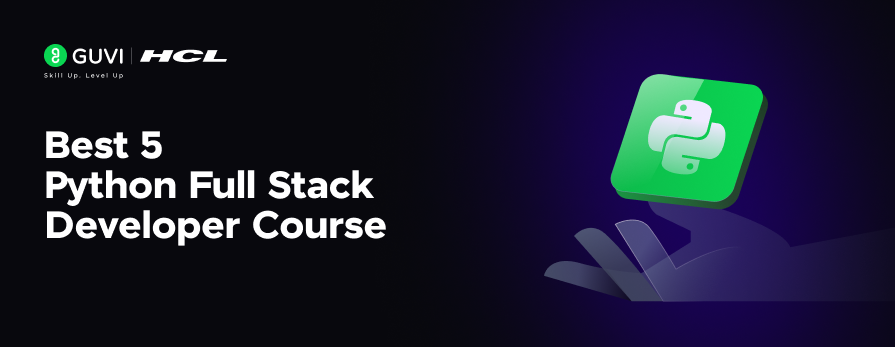
![What is TypeScript? A Beginner's Guide [2025] 10 typescript](https://www.guvi.in/blog/wp-content/uploads/2025/05/What-is-TypeScript_-A-Beginners-Guide.png)
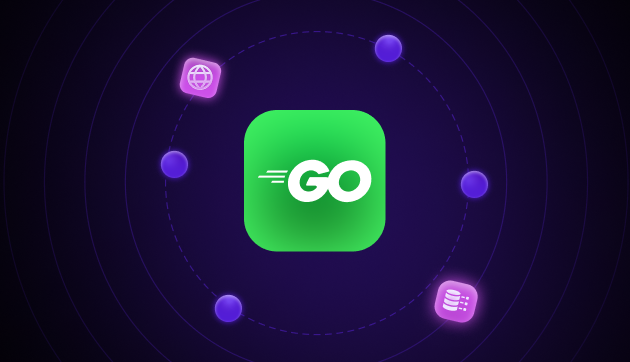
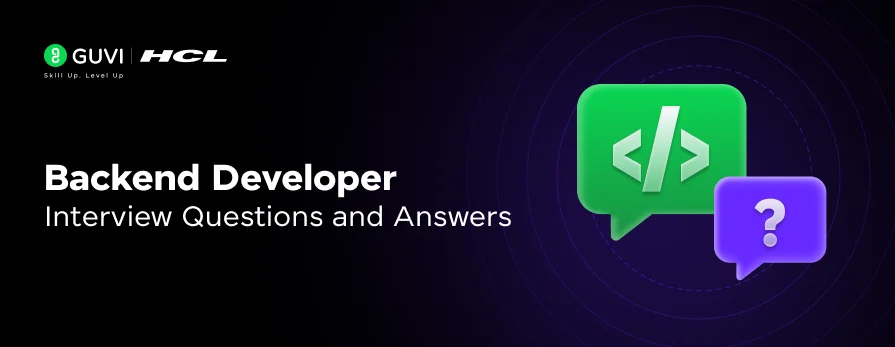
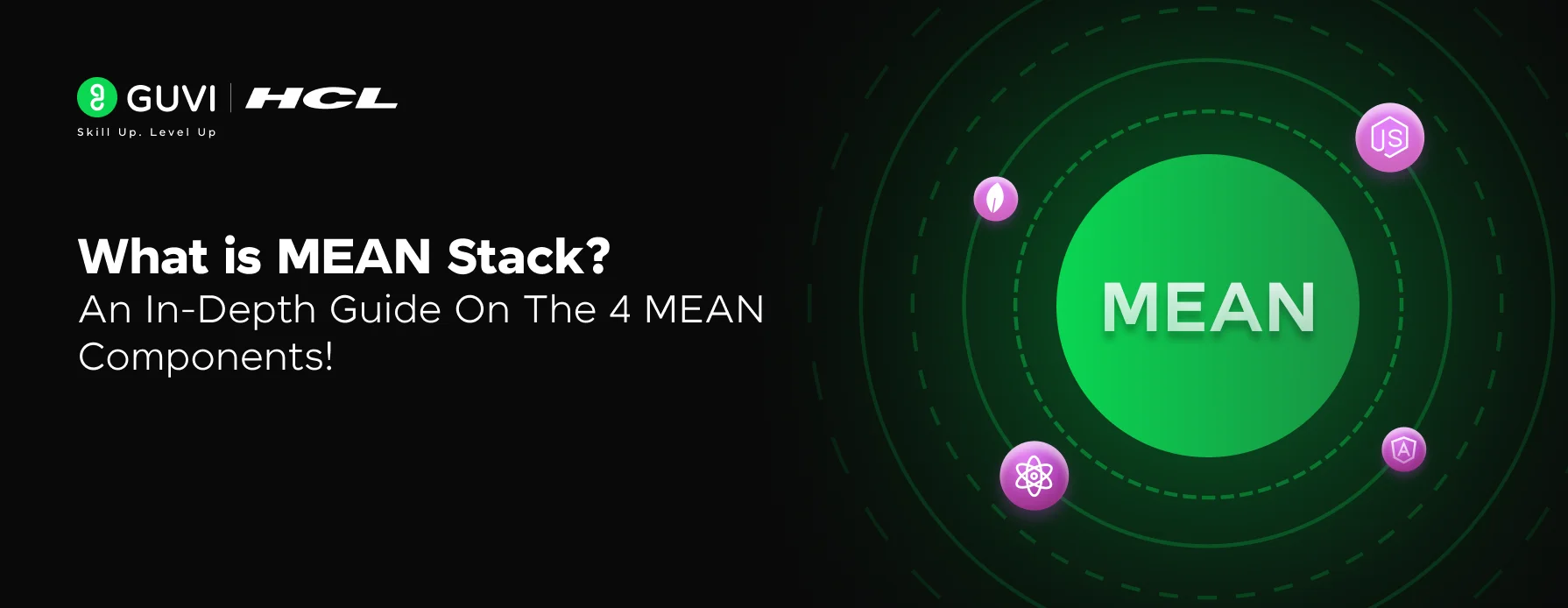
![What is ReactJS? A Beginner's Guide [2025] 13 what is reactjs](https://www.guvi.in/blog/wp-content/uploads/2025/04/What-is-ReactJS_-A-Beginners-Guide.png)


Did you enjoy this article?